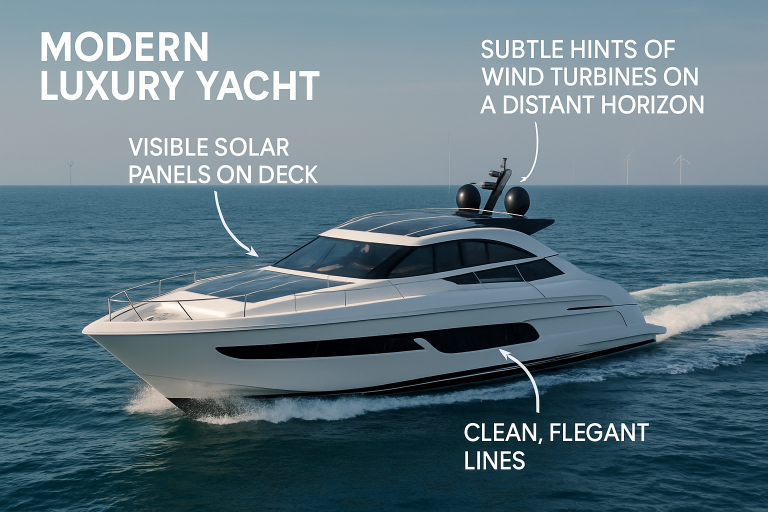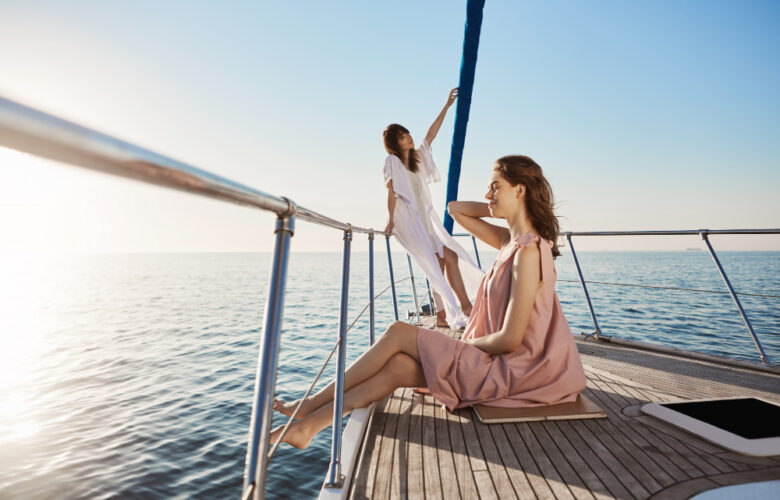Key Takeaways:
- Hybrid and electric propulsion systems are reducing emissions and enhancing efficiency in luxury yachts.
- The integration of renewable energy sources, such as solar and wind power, is becoming standard in yacht design.
- The use of sustainable materials and advanced waste management systems is helping to minimize environmental impact.
- Smart technologies and AI are optimizing energy use and improving onboard experiences.
Introduction
The pursuit of luxury on the water is evolving rapidly, with industry leaders responding to mounting environmental concerns and consumer demand for greener alternatives. Yacht owners, designers, and builders are increasingly seeking out eco-friendly innovations that help protect marine ecosystems for future generations. This movement is exemplified by manufacturers like Tiara Yachts, who are among those setting new benchmarks in sustainability while maintaining exquisite comfort and performance.
Sustainable luxury boating centers on adopting propulsion technologies that dramatically reduce emissions, integrating renewable energy solutions, and reimagining the construction process with environmentally sound materials. This holistic approach ensures that enjoying the world’s oceans is closely tied to preserving them, offering discerning yacht owners the best of both worlds. The marketplace is witnessing a growing trend toward reimagining not just how yachts are powered, but also how they’re built and what their long-term impact is on fragile marine environments.
Luxury yachts now frequently feature green technologies—whether through improved fuel efficiency or through the adoption of energy systems powered by the sun and wind. Sustainable design has become a core ethos, with brands embracing everything from electric propulsion to non-toxic paints—choices that benefit both boaters and the planet.
Furthermore, as yacht buyers look for tangible ways their pleasure crafts can contribute to global sustainability efforts, innovation in materials and onboard systems is accelerating. From waste reduction to fully optimized onboard energy management, these advancements represent a fundamental shift in how luxury vessels interact with the environment.

Hybrid and Electric Propulsion Systems
One of the most significant advances in sustainable boating is the development of hybrid and electric propulsion systems. By marrying diesel or gasoline engines with powerful electric motors, these setups enable yachts to reduce emissions, noise, and operational costs—particularly when cruising through protected waters or near harbors. Hybrid systems enable seamless transitions between power sources, improving efficiency and allowing for quieter, emission-free operation during key phases of a journey.
Recent improvements in lithium-ion battery technology have extended the range and practicality of electric yachts, supporting longer periods of zero-emission cruising. Some innovative models even use regenerative propulsion, where energy is recaptured during navigation and stored for later use—a solution that marks a significant leap towards fully renewable-powered yachting. Major boating publications, such as Boat International, have highlighted the importance of these technologies, noting their increasing adoption among both new builds and refits. As battery technology continues to evolve, the prospect of entirely fossil fuel-free journeys grows ever closer.
Integration of Renewable Energy Sources
Harnessing the abundant power of the sun and wind has become increasingly critical in modern yacht design. Ultra-thin, efficient solar panels are now seamlessly incorporated into deck structures, roofs, and hardtops, providing a sustainable energy source for onboard systems and amenities. These panels reduce the need for generators, resulting in both quieter operation and diminished fuel consumption.
Wind-assisted propulsion has also seen a renaissance, with advancements in modern sail design and compact turbines further reducing yachts’ environmental footprint. These solutions enable owners to extend voyages and minimize their ecological impact—proving that embracing sustainability can actually enhance the freedom and adventure that yachting offers. Incorporating renewables not only reduces a yacht’s emissions but also makes remote and off-grid cruising more feasible than ever before.
Use of Sustainable Materials
Eco-conscious buyers and manufacturers are transforming approaches to yacht construction by prioritizing sustainable materials. Lightweight, recycled metals, especially aluminum, are being used for hulls and superstructures, reducing emissions during both construction and operation. Responsibly harvested woods, bio-based resins, and natural fibers such as flax contribute to a reduced carbon footprint while maintaining the style and durability expected in the luxury market.
In line with this trend, Yachting Magazine highlights eco-friendly construction approaches, showing how innovative materials and processes are being used to create high-performance yachts with minimal environmental impact. Notably, eco-friendly interiors now favor materials that are both luxurious and ethically sourced, reducing the demand on vulnerable forest and mineral resources. Sustainable yacht interiors and exteriors offer a dual benefit: enhanced aesthetics and a significantly reduced environmental impact, all without compromising luxury or performance.
Advanced Waste Management Systems
Sophisticated waste management is at the forefront of minimizing the environmental footprint of modern yachts. Onboard systems are now designed to process and treat water efficiently, employing desalination and advanced filtration to convert seawater into potable water and treat wastewater before discharge. Biodegradable cleaning products and waste solutions help further reduce the burden yachts can place on often sensitive marine habitats.
Technologies such as dynamic positioning and compact waste compactors ensure yachts leave no trace when visiting protected areas, upholding a new code of conduct for responsible luxury boating. These advances cater to a growing segment of yacht owners who prioritize the health of the ocean as much as the comforts of their voyages.
Smart Technologies and AI Integration
The integration of innovative technology and artificial intelligence is reshaping expectations for safety, comfort, and energy efficiency. AI-powered navigation and route-planning systems optimize itineraries to reduce fuel consumption. Meanwhile, advanced onboard automation allows owners and guests to control lighting, temperature, and entertainment through voice activation or mobile devices, enhancing both sustainability and luxury.
Remote monitoring via connected apps, coupled with predictive maintenance algorithms, helps catch mechanical issues early and extends the lifespan of critical onboard systems. Furthermore, heightened cybersecurity protocols are essential as the connectivity of yacht systems increases, ensuring that both privacy and operational integrity are safeguarded in this new age of digital boating.
Conclusion
Sustainable trends in luxury boating demonstrate how environmental responsibility and comfort can go hand in hand. Through the deployment of hybrid propulsion, the adoption of renewable energy sources, the use of greener materials, innovative waste management solutions, and the integration of smart technology, today’s yachting experience offers unmatched enjoyment while honoring the need to protect the world’s oceans. As these practices become the norm, forward-thinking brands and owners will play a vital role in setting new standards for what constitutes true luxury on the water.
